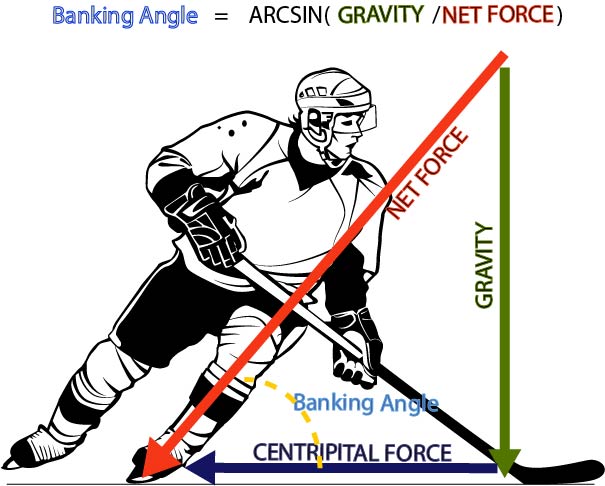Dynamic Balance
I love hockey. I played, quite poorly of course, for over 40 years but I could never seem to figure out how to stay on my feet. I could skate pretty well and handle the puck OK, but I couldn't do both at the same time. I could skate forwards and backward and sideways and slantways...but when someone managed to put a pass on my stick, I would immediately fall on my arse. I couldn't maintain balance.
Something similar plagued my tennis for at least as long. During a stroke, I always felt off balance. It seemed little more than an annoyance to me until I realized the awful truth: balance is an absolute requirement for control, consistency, and power in tennis. In fact, once you finish reading this page, you may agree with me that mastering balance is 80% of the game of tennis. Without it, you will certainly always fail. Understanding balance alone can carry your tennis to the next level.

Back to hockey. What I loved about hockey was the feeling of flight. There is a real sense, as you glide and bank around the ice on one razor-sharp edge of a thin blade of steel that you are one evolutionary step from sprouting wings. When I realized I had a balance problem in tennis I thought of the other "balance" sports I had (sort of) mastered; skiing, water skiing, and skating, and concluded that the most amazing part of each of these sports was banking.
Imagine a 200+ pound man on skates describing a 6-foot diameter arc, heeled over at an angle of 30 degrees on one foot balanced on one edge of one blade and so "on-balance" that he can take a full hit from another 200+ pound man and stay on his feet. That is balance! What keeps him up? I got that there is a balance between the gravity trying to pull his head to the ice and the centripetal force trying to flip him over the other way, but what makes this arrangement so stable?
It could only be that the Banking Angle is magical - that given the radius of the circle and the speed of the skater he would naturally "snap" into a certain angle and would resist any attempt to pull him or knock him out of it. I did a mechanical analysis looking for some balance equation that was "self regulating", i.e., a small deviation from the "Magic Angle" would tend to create a force pushing the skater back into that banking angle. How wrong I was! The banking angle is quite precarious. The only thing keeping him up is a precise balance between the net force pushing down through the skate blade and an opposing force by the ice against the blade (see diagram right). The net force can be controlled by one thing and one alone - tension in the quadriceps muscles (the extensor muscles in the front of the thigh). If the skater pushes a little harder, he will tend to stand up straighter (be less heeled over). A little softer and he heels over toward the ice. The point is that the brain is put in complete control of the attitude of the body as it flies around the ice. Without the quads, there is no control, no stability, and no balance. Meanwhile, the net force pushing against the ice helps the player resist any attempt to knock him over and provides a solid anchor to the ice allowing him to push off powerfully and generate speed. Without the centripetal acceleration that results from skating in a curved path, there is no battle between centripetal force and gravity and hence no net force and no balance. Also if the control leg goes straight the knee locks, quadriceps loses control over the net force, and the player goes down; a locked knee prevents the quadriceps from responding to small changes and exercising fine control of the net force. If the player puts any significant weight on the non-control foot, he goes down. If the player straightens out - stops accelerating around the curve - he goes down. This is dynamic balance.
